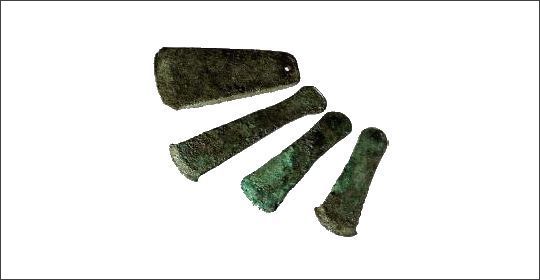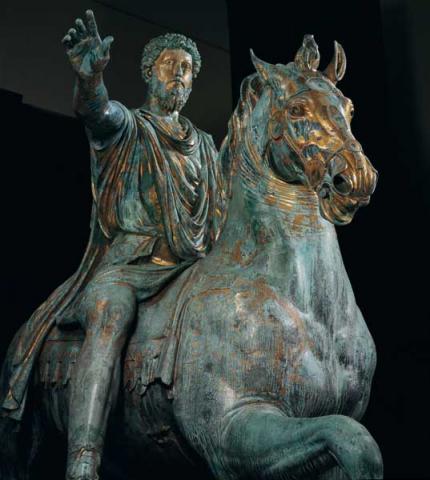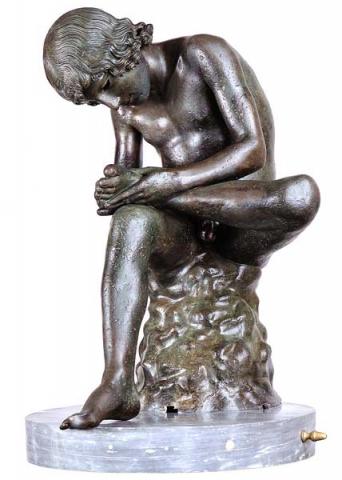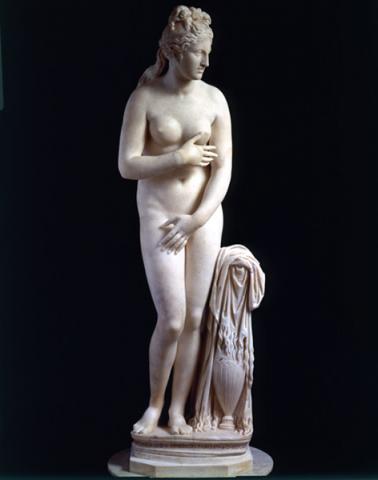Le asce di rame di Batrawy

On display are the copper axes (2500-2300 BC) from the Royal Palace of the ancient city of Batrawy (northern Jordan), discovered by the archaeological mission of the Sapienza University of Rome, after the restoration carried out by the Istituto Superiore per la Conservazione e il Restauro in Rome.
The story of the discovery of the archaeological site of Khirbet- al-Batrawy, at the edges of the Jordanian black basalt desert, is the extraordinary story of a city forgotten for four thousand years. Until 2004 nobody could imagine that on a hill at the northern periphery of the city of Zarqa, in North-Central Jordan (40 km from Amman), a city arose at the beginning of the third millennium BC, with huge fortification walls and a temple of considerable size.
Extending an ongoing research at Jericho, in Southern Levant, a team of archaeologists from Rome “La Sapienza” University, directed by Lorenzo Nigro, recognized the nature of human settlement of the site by means of systematic excavations since spring 2005 (www.lasapienzatojordan.it).
Built on a rocky hill dominating the desert and its caravan routes, Batrawy was a “gateway” towards the East, which linked the Jordan River to the tracks through the Syro-Arabic Desert, in a period when travels were still hard: dromedaries and camels were not used as means of transport, which employed the donkeys.
In the last season 2010 a new goal was pursued: the discovery of the Palace confirmed that this city was a major center in the region.
In the palace storeroom archaeologists unearthed big jars still containing foodstuffs, mainly barley (essential for the study of daily life at the site and its chronology through C14 analyses), luxury tableware, worked bone artifacts (including a ceremonial knife), a rare potter’s wheel (an authentic technological innovation at that time), and four copper axes.
The four copper axes, among the earliest examples of this kind of weapons manufactured in Jordan, had a symbolic value and for this reason they had been hoarded in the storeroom of the Royal Palace.
The obtaining of metal, copper in this case, and the manufacturing of the axes were advanced economic and productive activities, accomplished with the support and in the framework of the palace. The axes, thus, assume a particular meaning, as insignia of the royal power.
The four axes were found at the center of the storeroom, in a small hole in the floor at the base of a pillar.
They were forged in copper and their weight ranges from gr. 713.03 to gr. 160.56; they illustrate two different typologies, with some morphological features that have been made more readable thanks to restoration: three of them belong to the most common elongated types of that period, with a fan blade obtained by means of a careful hammering; a larger one, instead, belongs to the flag type, with a squared hole to fix the handle.
The longest specimen is characterized by a wide tang, to make easier the assemblage to the handle, which was done by gluing with tar and bandage the backside inserted into the wooden handle (the restoration has revealed the presence of a compression on the heel, presumably due to the insertion into the handle).
After casting in open moulds, the axes were finished by hammering, namely in the three specimens of the long type, in order to create the fan blade, which was then sharpened.
In all Palestine and Jordan in the Early Bronze III (2700-2300 BC), only seven axes from the same period (and a few other items in copper) were known until now.
The axes of Batrawy, thanks to the permission of the Department of Antiquities of Jordan, have been restored by the Istituto Superiore per la Conservazione e il Restauro of Rome by a team of experts, under the supervision of the Director Gisella Capponi.
Information
Tuesday-Sunday: 9.00 am - 8.00 pm;
Last admission 1 hour before closing time;
Closed: Monday.
Free exhibition upon purchase of the admission ticket to the Capitoline Museums.
Regular tickets:
Adults: € 8,50;
Concessions: € 6,50;
Roman citizens only (by showing a valid ID): € 7,50 (adults) - € 6,50 (concessions)
Conditions for Concessions and free of charge admission
Please note, during the 2011 Week of Culture (April 9-17, 2011) the admission ticket is € 3,50, while a € 2,00 Special “Ridottissimo” Ticket is granted to visitors who usually are entitled to gratuity. Free admission is granted only to: children under 6 years of age, elementary and intermediate school groups, disabled people and a carer and Roma Pass and Roma&Più Pass card holders if used to claim one of the first two free admissions.
Info: tel. +39 060608 (daily from 9.00 am to 9.00 pm)












































